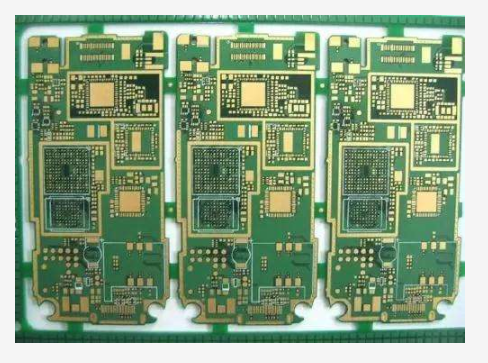Why does the ceramic substrate surface treatment process use more immersion gold than gold plating?
In PCB proofing, both gold-immersion and gold-plating are one of the surface treatments. Then why is there more gold-immersion than gold-plating when choosing the surface treatment for the substrate of the ceramic substrate?
The general surface treatment processes for ceramic substrates are as follows:
Light board (no treatment on the surface), rosin board, OSP, spray tin (with lead tin, lead-free tin), gold plating, immersion gold, immersion silver, etc.
In terms of conductivity and reliability, gold-immersion and gold-plating are the two most commonly used, so why is there more gold-immersion than gold-plating in the PCB proofing of ceramic substrates?
Gold plating generally refers to "electroplating gold", "electroplating nickel gold", "electrolytic gold", etc. There is a distinction between soft gold and hard gold (generally hard gold is used for gold fingers). The principle is to combine nickel and gold ( Commonly known as gold salt) is dissolved in chemical water, the circuit board is immersed in the electroplating tank and the current is connected to form a nickel-gold coating on the copper foil surface of the circuit board. The electro-nickel-gold coating has high hardness, abrasion resistance, and is not easy to oxidize The advantages are widely used in electronic products.
Immersion gold is a method of chemical oxidation-reduction reaction to generate a layer of plating, generally thicker, is a kind of chemical nickel-gold layer deposition method, can reach a thicker gold layer.

Immersion gold VS gold plating in PCB proofing of ceramic substrate:
1. Immersion gold is different from the crystal structure formed by gold plating. Immersion gold is much thicker for gold than gold plating. Immersion gold will be golden yellow and more yellow than gold plating (this is one of the ways to distinguish between gold plating and immersion gold. one).
2. Immersion gold is easier to weld than gold plating and will not cause poor welding.
3. The immersion gold board only has nickel and gold on the pads, and the signal transmission in the skin effect is on the copper layer without affecting the signal.
4. Immersion gold has a denser crystal structure than gold plating, and it is not easy to produce oxidation.
5. As the machining precision requirements of ceramic circuit boards are getting higher and higher, gold plating is prone to short circuit of gold wires. The immersion gold board only has nickel gold on the pad, so it is not easy to produce gold wire short circuit.
6. The immersion gold board only has nickel and gold on the pads, so the solder mask on the circuit and the copper layer are more firmly combined.
7. The flatness and service life of the immersion gold plate is better than that of the gold plated plate.
PCB proofing of ceramic substrates is a special process. Because ceramic substrates are fragile, hard to process, expensive, and low yield, some PCB proofing manufacturers are usually unwilling to do or less do it when facing such orders. ipcb is a high-precision,high-quality PCB manufacturer, such as: isola 370hr PCB,high-frequency PCB, high-speed PCB, ic substrate, ic test board, impedance PCB, HDI PCB, Rigid-Flex PCB, buried blind PCB, advanced PCB, microwave PCB, telfon PCB and other ipcb are good at PCB manufacturing.